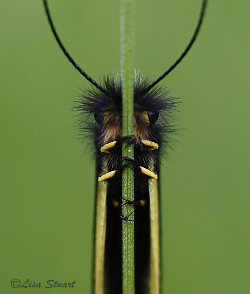Two colourful Coleoptera caught my attention this summer. The first was found in July in our yard, sadly demised but still eye-catchingly blue. The photos don't do it justice but were enough to corroborate Teresa's suspicion that it was
Rosalia alpina, a rare member of the Cerambycidae family and classified in the Spanish Red List of Endangered Invertebrates as Vulnerable due to the decline of its preferred Beech forest habitat.

As there are no Beech woods in our immediate vicinity we guess it somehow hitched a lift from the area around Fuente De and Espinama where Mike had been that day, then was most likely preyed upon by our kitten. Its antennae were still impressively long.

In my memory the beetle was much larger than the size shown in the picture below!

I'm cheating a little with the second beetle because it wasn't in the Picos, not even in the Cordillera Cantábrica, but a bit further south near a limestone outcrop in Palencia province, northern Spain. Worth recording though I think.
I was wandering the edge of a marshy area, full of reeds, looking for damselflies when I saw this pale turquoise little chap clambering around the head of a Common teasel.

We gently removed him (her?) for a closer inspection and watched for a good while, engrossed in his climbing abilities. The long rear limb ending in a hook proved to be an excellent aid for hanging on while searching for the next hold.

Luckily Carlos Sánchez of Náyade Films and Editorials was on hand with his recently published guide to the nature of Castilla and León which handily included this Scarab beetle, identified therein as Hoplia korbi.











